-
Home
-
Data & Publications
-
Regional Portals
- About Regional Portals
- Florida
- Navassa Island
- Puerto Rico
- Flower Garden Banks
- U.S. Virgin Islands
- American Samoa
- Commonwealth of the Northern Mariana Islands
- Federated States of Micronesia
- Guam
- Main Hawaiian Islands
- Republic of the Marshall Islands
- Northwestern Hawaiian Islands
- Republic of Palau
- Pacific Remote Island Areas
-
CRCP Activities
- Glossary
National Coral Reef Monitoring Program: Guam Infographics
The Socioeconomic Component of the National Coral Reef Monitoring Plan (NCRMP) gathers and monitors a collection of socioeconomic variables with the overall goal of tracking relevant information regarding each jurisdiction's population, social and economic structure, the impacts of society on coral reefs, and the impacts of coral management on communities.
Why Care about Coral Reefs?
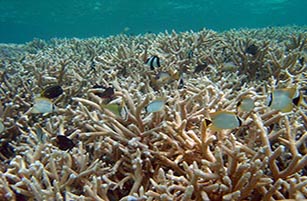
Coral reefs provide many benefits to communities, regions, nations, and the world at large. They protect many marine species, and provide a significant source of protein to people all over the world, in addition to producing natural compounds that scientists have used to develop treatments for illness and disease. Coral reefs also act as natural barriers to coastal storms and aid in the protection of our coasts and coastal communities, as well as economically supporting local and global communities. Coral reefs and their protected beaches provide an attractive setting for travelers and locals, alike, and between the tourism industry and fisheries, coral reefs generate billions of dollars and millions of jobs in more than 100 countries around the world.
Why Care about Coral Reef Communities?
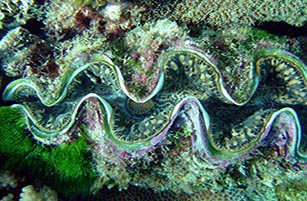
People are very much a part of coral reef ecosystems, and their connections can have lasting impacts. Because of this, NCRMP gathers data from coral reef communities about:
- Public knowledge, attitudes, and perceptions about coral reefs
- Participation in coral reef activities, such as fishing
- Economic and cultural value of coral reefs
- Community well-being
- Population changes and the distribution of people in coral reef locations
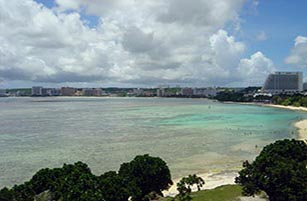
Researchers collect data through periodic surveys that include standardized questions, as well as questions specific to local management needs. Data from sources such as the U.S. Census Bureau and local government agencies supplement these results. In addition to using this information for conservation and restoration efforts, scientists and communities use these data to measure social and economic conditions and document how people use and perceive coral reef resources.
Guam Trends
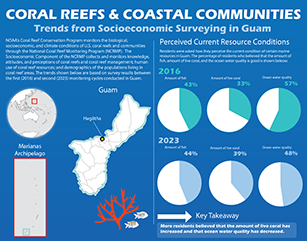
Trends in NCRMP socioeconomic data from Guam's first (2016) and second (2023) monitoring cycles are highlighted in this infographic. The trends shown are based on surveys of household residents in Guam. The infographic shows how there have been some changes in residents' participation in coral reef activities, perceptions of resource conditions, importance of coral reefs, familiarity with threats, and support for management.
2023 Guam Survey
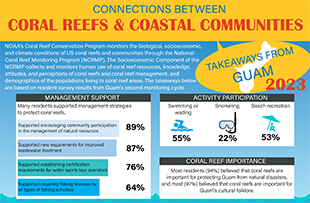
Results of the 2023 NCRMP socioeconomic monitoring survey of Guam residents are shown here in this infographic. Using a stratified random sampling methodology, the survey targeted individuals aged 18 and older in Guam (further stratified by northern and southern regions). Surveys were conducted in person, and were offered in English and CHamoru. A total of 653 surveys were completed with a response rate of 20%. All results are representative of the Guam population and strata.
2016 Guam Survey
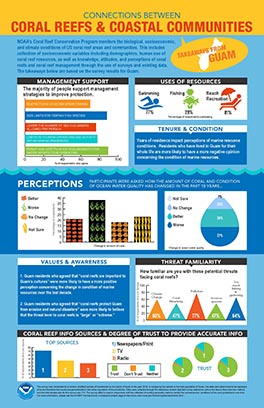
Results of the 2016 NCRMP socioeconomic monitoring of Guam are shown here in this infographic. They highlight Guamanians’ perceptions, values, and level of support for Guam coral reef management alternatives.
Using a stratified random sampling approach, this survey targeted Guamanian residents over the age of 18. Surveys were conducted through the telephone random digit dial survey method, as well as through the “face-to-face” interview method. Residents were sampled proportionate to the total population of Guam. A total of 712 surveys were conducted in English, Chamorro, Carolinian, or Tagalog (based on respondent preference). The results are statistically representative of the population of Guam.
For more information, contact:


